Author Archive
The Underperforming and Overachieving Pitching Staffs of 2025
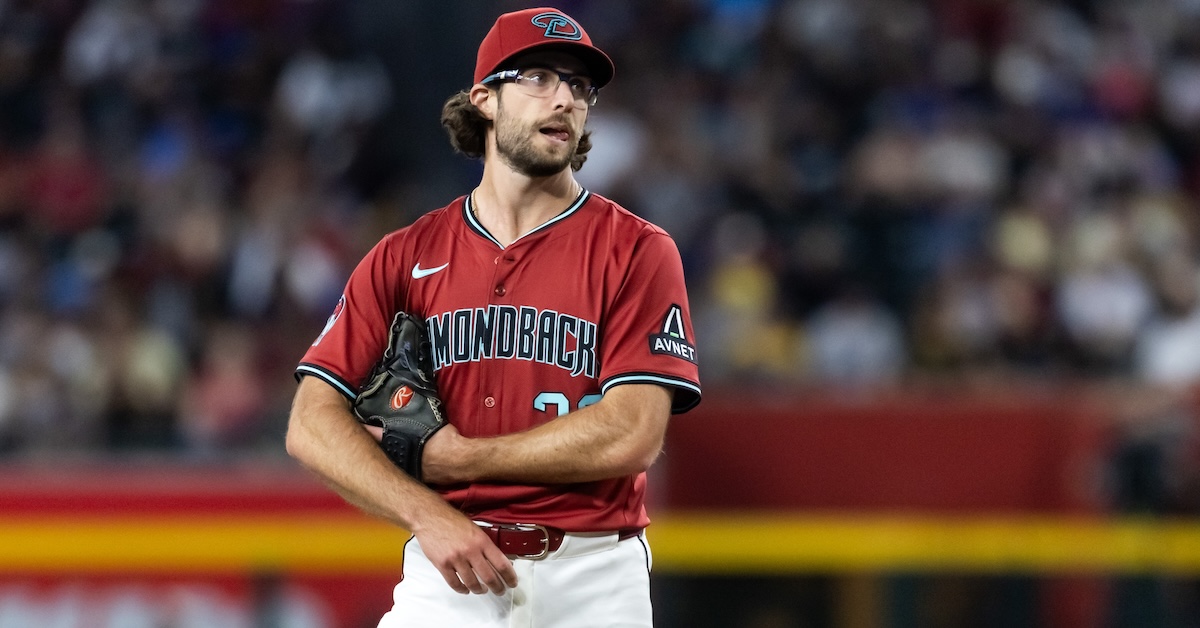
Last week, I took a peek at which offenses have exceeded (or missed) expectations this year. I did that by taking every player’s preseason projection and actual playing time to create a projected wOBA for the entire offense. I compared that to what has actually happened. The difference? That’s what we’re looking for, how much a team has surprised to the good or bad in 2025.
I couldn’t leave it at just one phase of the game, though. Pitching can be measured the same way (ish, see methodological notes below if you’re interested in the nitty gritty). I didn’t want to compare ERA (too noisy) or FIP (too regressed, aka not noisy enough). I settled on wOBA as a good representation of how well a pitching staff is doing overall. It’s a middle point between the two other options, so we are neither ignoring what happens on balls in play, nor caring too much about sequencing. Here, for example, are the Texas Rangers, the biggest overachievers of the season:
| Player | Batters Faced | Proj wOBA Allowed | wOBA Allowed | Difference |
|---|---|---|---|---|
| Jacob deGrom | 525 | .266 | .270 | 0.003 |
| Patrick Corbin | 475 | .342 | .318 | -0.024 |
| Jack Leiter | 432 | .325 | .302 | -0.023 |
| Nathan Eovaldi | 421 | .305 | .214 | -0.091 |
| Tyler Mahle | 308 | .313 | .255 | -0.057 |
| Kumar Rocker | 287 | .297 | .350 | 0.053 |
| Jacob Latz | 232 | .320 | .293 | -0.027 |
| Hoby Milner | 223 | .302 | .228 | -0.074 |
| Shawn Armstrong | 201 | .309 | .234 | -0.075 |
| Jacob Webb | 200 | .308 | .294 | -0.014 |
| Robert Garcia | 187 | .285 | .314 | 0.029 |
| Caleb Boushley | 152 | .323 | .321 | -0.001 |
| Luke Jackson | 152 | .313 | .317 | 0.005 |
| Chris Martin | 140 | .278 | .278 | 0.000 |
| Cole Winn | 99 | .331 | .217 | -0.114 |
| Dane Dunning | 46 | .319 | .331 | 0.012 |
| Merrill Kelly | 45 | .314 | .346 | 0.032 |
| Jon Gray | 44 | .311 | .306 | -0.005 |
| Gerson Garabito | 41 | .323 | .417 | 0.094 |
| Luis Curvelo | 27 | .326 | .304 | -0.022 |
| Marc Church | 23 | .315 | .334 | 0.019 |
| Danny Coulombe | 16 | .298 | .284 | -0.015 |
| Phil Maton | 10 | .314 | .158 | -0.156 |
| Codi Heuer | 5 | .325 | .521 | 0.195 |
| Team | 4291 | .308 | .284 | -0.024 |
Right away, you can see why they’ve beaten expectations by so much. Four-fifths of their starting rotation, four of the five pitchers who have faced the most batters, have performed meaningfully better than their preseason projections. The fifth is Jacob deGrom, who had one of the best projections in baseball coming into the season and has hit it on the nose. Even their most-used bullpen arms have been pleasant surprises. That’s how you allow the fewest runs in baseball by a mile, apparently. Read the rest of this entry »
Five Things I Liked (Or Didn’t Like) This Week, August 8
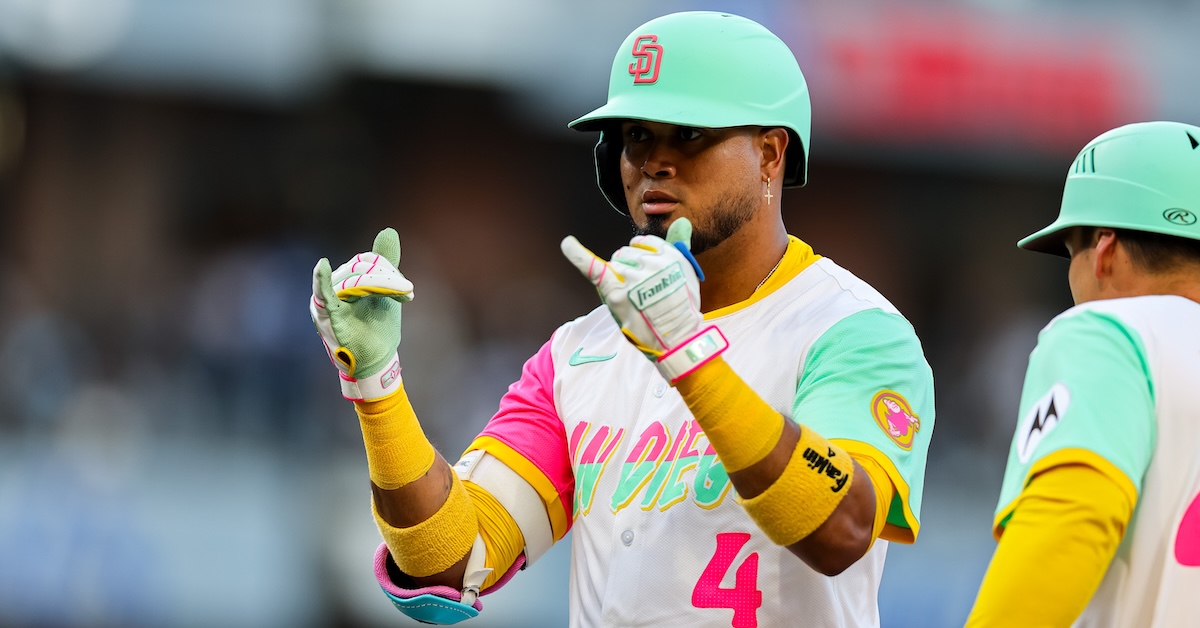
Welcome to another edition of Five Things I Liked (Or Didn’t Like) This Week. Between a vacation, the All-Star break, the Trade Value Series, and the trade deadline, Five Things has been on a bit of a summer hiatus. Baseball itself doesn’t stop, of course; weird and delightful things happen whether I’m documenting them or not. But I still couldn’t shake the feeling that this week had an extra helping of whimsy. Balls took funny hops. Good pitchers got shelled in unexpected ways. Balks took center stage. Leads changed hands late, defenders kicked things into high gear – there was so much delightful baseball this week that I struggled to narrow it down to five things. Seven things just doesn’t have the same ring to it, though, so let’s quickly nod to Zach Lowe of The Ringer for the column inspiration and get going.
1. The True King of Contact
Writing about Luis Arraez can be a bummer sometimes. Not because he’s bad – he’s emphatically not – but because merely mentioning his name reinvigorates the age-old argument between those who say there are too many strikeouts and those who insist that slug is in the air. Should everyone be doing what Arraez is doing? Is he an anachronism? Is he underrated? Overrated? He’s so good at what he does – and what he does is so different from what most good baseball players do – that these questions are frustratingly omnipresent in any discussion about Arraez.
That said, I think I found an Arraez play that won’t divide the audience. The key is for it not to involve a ball in play, a walk, or a strikeout. Take a look at this beauty:
The Underperforming and Overachieving Offenses of 2025
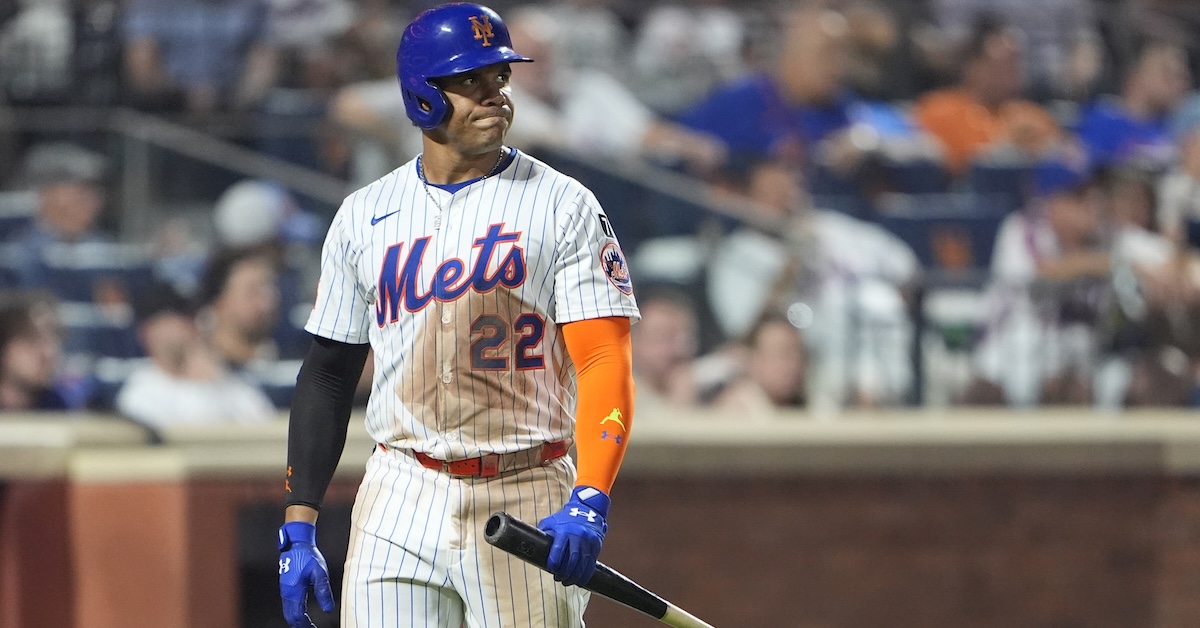
If you’re a fan of a large-market team that has recently been struggling to score runs, you may be eligible for compensation. Wait, no – that’s not right. You may be eligible to complain about your team in my weekly chat? Not quite it, either. Let’s try it one more time… If you’re a fan of a large-market team that has recently been struggling to score runs, you are eligible to read this article and see to what extent your team has let you down and to what extent it’s just a narrative.
The Yankees and Mets have been having a tough time of late, which always brings out doubters, both fans and rivals. I don’t quite know what to tell those grumpy souls. You’re upset with the Yankees offense? Well yes, sure, absolutely, carry on, but they do have the highest team wRC+ in baseball. The Mets let you down? Without a doubt, they’re the Mets, so on and so forth – but they’re top 10 in baseball in wRC+, too. Orioles offense bumming you out? Yeah, I mean, they’ve been a bummer, but they’ve also been impacted by injuries, which seems hard to blame them for.
I came up with a quantitative test for how much teams have disappointed relative to preseason expectations. I took the actual playing time that each team has allocated so far. Then, I used preseason projections to come up with the offensive numbers we’d expect from each team given who has played and how good we projected them to be. I compared that to how good the team has actually been. The difference between those two numbers is the aggregate overachievement or underperformance that can’t be attributed to injury.
Read the rest of this entry »
Reports of Garrett Whitlock’s Decline Have Been Greatly Exaggerated

Four years ago, Garrett Whitlock’s emergence as an elite major league reliever was one of my favorite stories in baseball. How could it not be? He was a Red Sox Rule 5 pick who had been on the Yankees. It doesn’t get much better than that. He was a dominant multi-inning reliever right from the jump, with a 1.96 ERA over 73 1/3 innings pitched and excellent peripheral statistics across the board.
The years since then haven’t been so halcyon. He followed up his breakout with another good year of relieving, but a foray into starting went only OK. Whitlock started 2023 season in the rotation but pitched poorly, hit the IL three times, and ended the year as a mid-leverage bullpen arm. Then he tried the rotation again in 2024, but hurt his elbow after four starts and had internal brace surgery. All told, those three seasons came with a 4.01 ERA, a 3.71 FIP, and not a ton of volume.
That internal brace surgery brings us to this year. Internal brace procedures come with faster turnaround times than full Tommy John surgery, and Whitlock was ready for Opening Day. He started the season as a middle reliever and mopup man, entering in the fifth, fourth, and eighth (down four runs) for two innings apiece in his first three appearances. He didn’t look immediately restored, but who would? After he acclimated to the majors again, though, his command snapped back to its prior superb level, his secondaries improved, and he’s been nothing short of outstanding. Welcome to Garrett Whitlock’s second act. Read the rest of this entry »
The Horror! The Horror! (Of Pitching to Nick Kurtz)
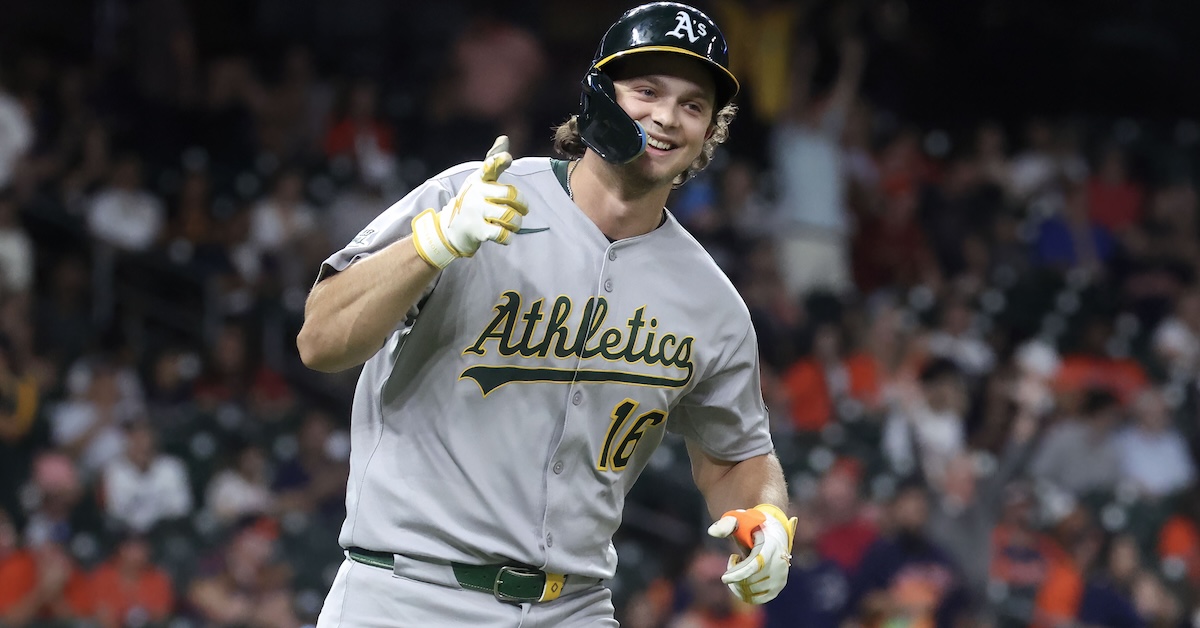
You’re probably pretty good at baseball if you end up on this list:
| Player | wOBA |
|---|---|
| Aaron Judge | .805 |
| Nick Kurtz | .778 |
| Christian Yelich | .749 |
| Shohei Ohtani | .746 |
| James Wood | .727 |
| Kyle Stowers | .700 |
| Kyle Schwarber | .682 |
| Riley Greene | .662 |
| Elly De La Cruz | .660 |
| Gunnar Henderson | .614 |
I get it. “Doing damage when you elevate the ball” isn’t the only skill that’s necessary to be a good major league hitter. It’s not even close to the only necessary skill. On the other hand, look at that list! It goes 10 hitters deep, and they’re all great. The worst guy on that list is probably Christian Yelich, and he’s having a nice year despite dealing with his chronic case of can’t-ever-get-the-ball-off-the-ground-itis.
Psh! Who cares about wOBA? What even is wOBA? First of all, good news, here’s an article explaining it in great detail. Second, fine, let’s use a different statistic then. Here’s slugging percentage, same minimum of 100 batted balls:
| Player | SLG |
|---|---|
| Aaron Judge | 1.402 |
| Nick Kurtz | 1.370 |
| Shohei Ohtani | 1.321 |
| James Wood | 1.234 |
| Christian Yelich | 1.225 |
| Kyle Stowers | 1.174 |
| Kyle Schwarber | 1.172 |
| Riley Greene | 1.104 |
| Cal Raleigh | 1.077 |
| Elly De La Cruz | 1.068 |
Winners and Losers From the 2025 Trade Deadline
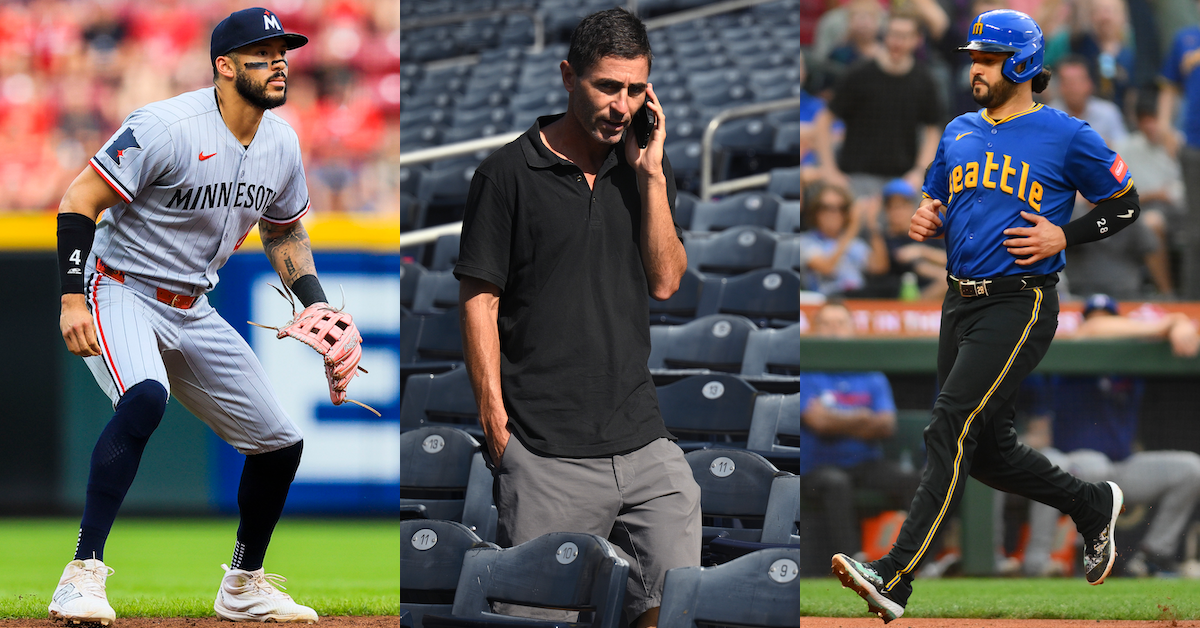
Now that the deadline dust has settled – or at least, started to settle – it’s time to start making sense of it. The Padres, Twins, and Orioles were everywhere. Top relievers flew off the board. Both New York teams spent all day adding. But who did well? Who did poorly? Who was so frenetic that they probably belong in both categories more than once? I tried to sort things out a little bit. This isn’t an exhaustive list. There were 36 trades on deadline day, a new record, and more than a dozen before it. Nearly every team changed its trajectory at least a little, and this is just a brief look into the chaos. Here are the trends that most stood out to me.
Winner: Teams Trading Top Pitchers
This year’s crop of rental players was lighter than usual, but deadline activity didn’t slow. Instead, it simply spilled over into relievers under contract for a while. Mason Miller, Jhoan Duran, Griffin Jax, and David Bednar are under contract for a combined nine more years after 2025. That drove the prospect price up on all four. Having long-term control of relievers might be less valuable than at other positions, but it’s still valuable.
Most of the best prospects who swapped teams at the deadline were involved in a trade for top pitching. Leo De Vries, the consensus best player of the 2024 international signing period, was the big name here, but both the Phillies and Yankees offered up multiple good minor leaguers in exchange for Duran and Bednar. Taj Bradley, whom the Twins got back for Jax, is a former top prospect who won’t be a free agent until 2030. Read the rest of this entry »
Out With the Old and in With the New (Utility Infielder) in the Bronx
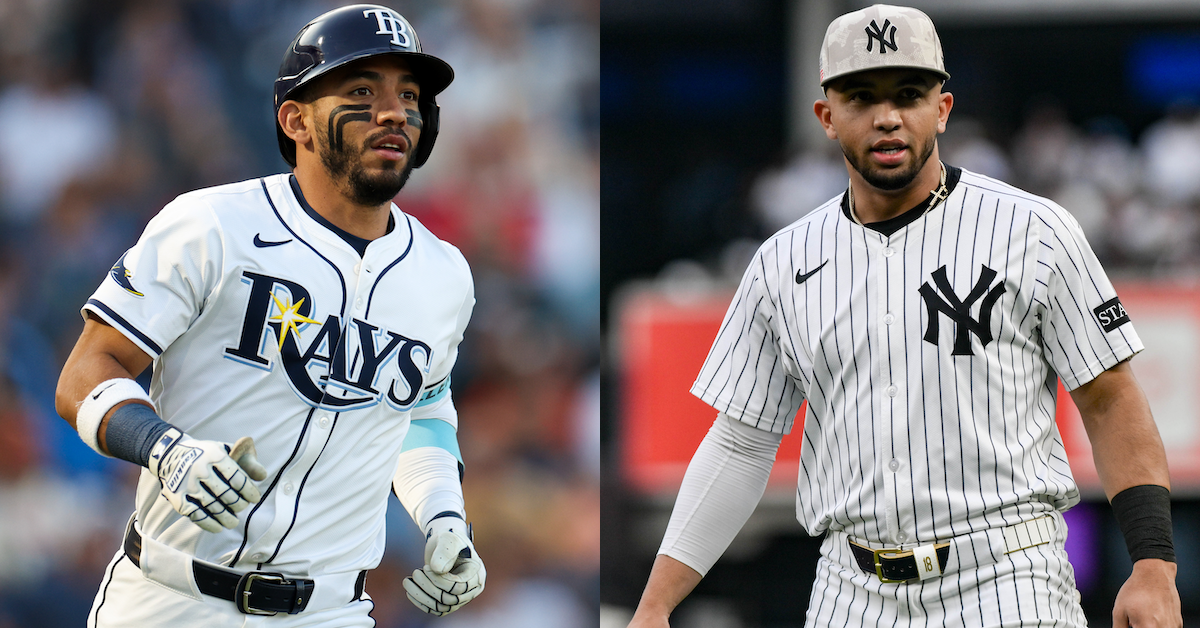
The Yankees had a busy deadline season. Whether trading for Ryan McMahon, patching smaller holes, or adding top relievers, they were in the news seemingly every day for adding to the 2025 club. As the deadline approached, they looked at their roster and decided that merely adding wasn’t enough. Thus, they finessed a roster reshuffle Thursday afternoon, acquiring utility infielder José Caballero from the Rays and trading utility infielder Oswald Peraza to the Angels.
Let’s start with Caballero. A plus-fielding, slap-hitting nuisance (complimentary), he has been a perfectly serviceable utility infielder in two-plus years of big league play. He has below-average raw power and a patient approach at the plate, which can result in some ugly strikeout numbers when pitchers challenge him early in the zone and he takes. Though he’s good at elevating the ball, it’s rarely with much authority, and he never quite worked out the Isaac Paredes trick of turning mediocre raw power into pulled homers. He was still a league-average contributor overall, though, because the rest of his game is excellent.
No matter which metrics you subscribe to, Caballero is a plus defender across the infield. He started playing the outfield this year and took to it quickly. He’s a pretty good bunter, if you’re into that; if you need someone to come off of the bench in a late-and-close situation and advance the runners, he’s your guy. Read the rest of this entry »
Rangers Stock Up on Pitching With Merrill Kelly and a Pair of Relievers
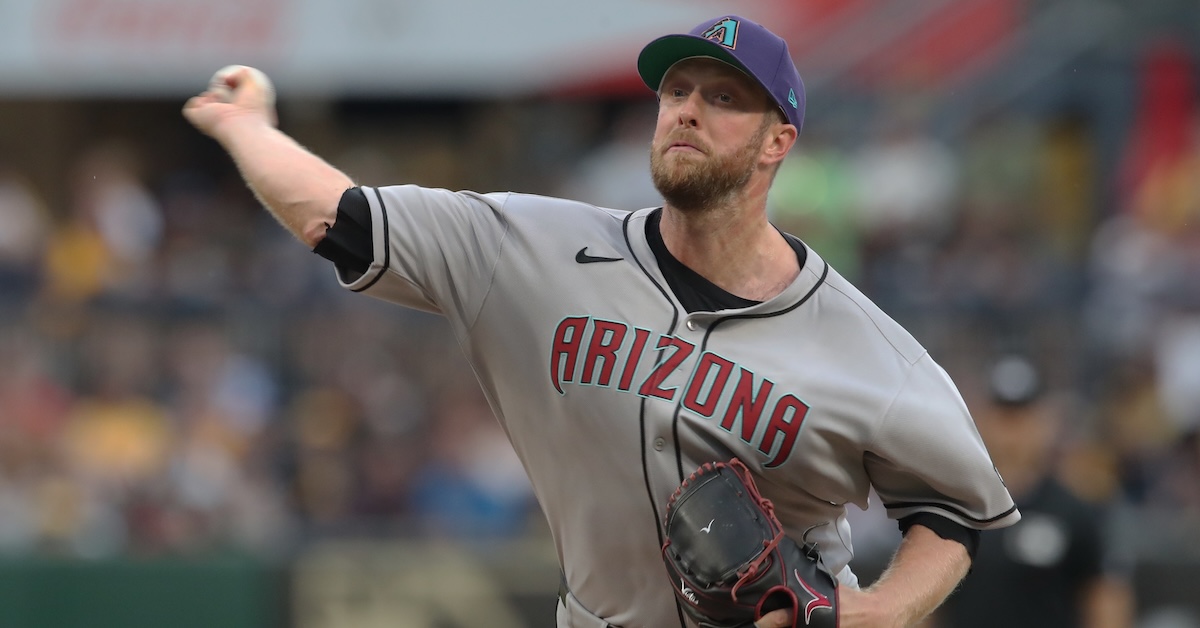
On June 30, the Rangers lost to fall to 41-44, 10th place in the American League. Then they turned it on. Since the calendar flipped to July, they’ve gone 16-8 and rocketed into the playoff picture. They’re tied with the Mariners for the last AL Wild Card spot. With their sights now set on thriving in October, they needed to reinforce a pitching staff that has been quite good up top but got shakier as you went down the depth chart, and the Diamondbacks were happy to oblige. As Ken Rosenthal first reported, the Rangers are getting Merrill Kelly in exchange for Kohl Drake, Mitch Bratt, and David Hagaman. They also acquired Danny Coulombe and Phil Maton in separate deals to shore up the middle of their bullpen.
Texas has a famous starting rotation. The two stars, Jacob deGrom and Nathan Eovaldi, need no introduction. Second on the team in innings, slightly ahead of Eovaldi? That’d be World Series winner Patrick Corbin, famous both for his high highs and low lows. The back of the rotation? Jack Leiter and Kumar Rocker, famous college teammates before they were famous prospect teammates. But Leiter and Rocker have been flat this year, and Corbin was bad enough for long enough that I’d be a little scared of counting on him. Tyler Mahle, another celebrated Rangers starter, has been out since June. Jon Gray is headed for free agency and has perhaps been banished to the bullpen for the remainder of 2025. And it’s not like deGrom has been the paragon of health over the last few years.
Kelly lengthens the playoff-ready portion of Texas’s rotation immediately. His career 3.74 ERA and 3.97 FIP are accurate representations of his work, as are his 22% strikeout rate and 7.4% walk rate. In other words, he’s a perfect mid-rotation arm, better than average (he’s managed a 3.22 ERA and 3.53 FIP this season) but squarely short of an ace. He’s 36 and a free agent after this year, which limits his return somewhat, but he’s a dependable playoff starter and thus a very desirable deadline target. Read the rest of this entry »

